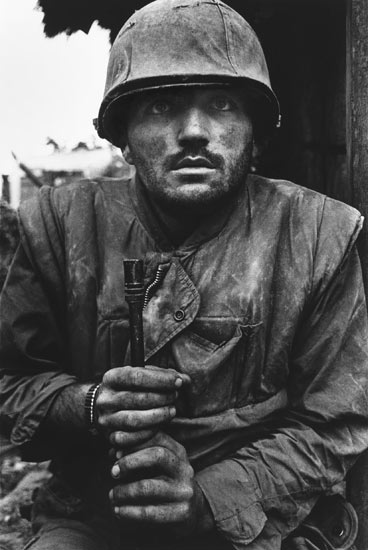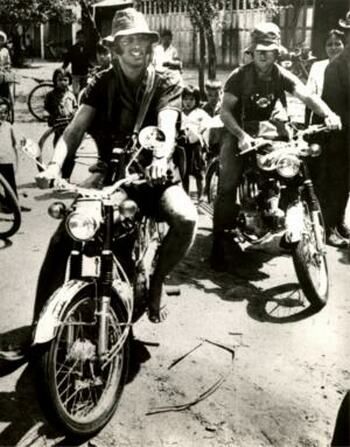I guess if you are a terrorist and you accidentally blow yourself up before you reach your target, instead of all the promised virgins you get a magazine and a sock.
Category: Military (Page 1 of 3)
Here we are at another Memorial Day. Pretty much everywhere you will see celebrations of gratitude. Churches will ask veterans to stand for a moment during the service. Parades will be packed with vehicles and veterans of previous conflicts.
I always think of the people who never made it home. Some of them were volunteers. Many were draftees fulfilling their obligation. A few were running from trouble. What they all had in common is that they all thought they would return home. These were young men and women who for the most part imagined their deployment would be a brief interlude in what would surely be a long life. Some believed in the cause of the time, while others just believed in service to the nation, or to go along with their friends and get their obligation over safely. We can all identify with them in some respect. They are all gone. They will not return home alive. Some will not return home at all.
Then I think of current events. I think of all the people deployed to our two fronts. I think about it too long, and I get irritated.
Our nation is good at many things. One of those things is apathy. It is an apathy about the services and their hardships. People are even tired of hearing about the hardships. After all, we are talking about volunteers. “We didn’t make them join the service.” That is true. But we elect our government, and that government influences what happens to our military. And frankly, those we elect don’t get it most of the time. They never served or deployed.
Life in the service is a voluntary life of sacrifice. Even in the best non-conflict circumstances, it can be a difficult life for the service member and the family. You experience dangerous training deployments, high stress situations, and personal strife from long deployments. I know everyone experiences stress in their lives. I am just saying the average service member’s fun meter is usually pegged a little bit more than a civilian.
When you send a person into a shooting war, and they spend some time there, they change. Most of the time, they change a great deal. Don’t take my word for it, do some research. I was never in a shooting war, but I have been around more than a few folks who have. Men and women. They change.
Our manpower numbers are so thin that we are putting our military through an out of control machine of deployments. The same people deploy over and over. You go for months deployed, then a year or so home, then back, then home, and on and on. Change upon change upon change. Over time we have accrued all these professional warriors who like being deployed more than being home. But then we sweep them out like so much dust and dirt. They get therapy in bucket loads, but they are out. Their identity is gone. Sorry, we need the money.
We reduce costs by reducing manpower. It is the quickest way a corporation can raise cash in house. Our Military is no different. “The missions have changed” or “our strategic threats have changed” etc. Sure they have. But while we reduce manpower, we continue to buy unnecessary vehicles, systems, doctrine, and support. I will cite the V-22 Osprey as one example. What madman dreamed that aircraft up? “We need speed, more lift, etc, due to our threats”. Is it cheaper than two helicopters? One Osprey’s fly away cost is 67 million dollars today. The workhorse in Afghanistan is still the Chinook. Fly away cost 37 Million. The Chinook seats more troops, can lift 50,000 lbs which is only 10K less than the Osprey, and is definitely slower. As for the speed issue, the latest Sikorsky experimental helicopter is in the 400 mph range, comparable to the Osprey. My point in droning about all this is we are paying twice as much for more complexity, an unproven over time design, and less troop capacity. Ouch.
Which leads me to the point of all this. Our military is stretched too thin. In 2009, the Army had 548,000 active duty. With a mission to bring in over 80,000 new soldiers per year, the force is 1/7 untrained and unprepared to fight. Since a percentage is always leaving, meaning they don’t fight all the way up until the day they muster out, there is another hefty number not able to fight. Ouch. And since not everyone in the Army is a shooter, but may be a supporter at home in an office, this cuts the availability of a fighting force even more.
Is the answer more brigades? This is the structure the Army is adopting, the modular brigade concept. Brigades cost big money by any estimate. The GAO estimates 3 to 4 brigades and 3 headquarters of approximately 20,000 soldiers (brigades and headquarters combined) would cost about 2 billion annually. There is no free lunch, unfortunately. The Osprey’s cost is at 27 BILLION as of 2008. Think about that. That’s more than a few brigades.
A soldier can be trained to do many many things. They are cheaper, more flexible, and the rate of return is greater for your money. The more you have, the easier it is to do things. A soldier can run, climb, swim, think, and sacrifice. It’s all about boots, especially in today’s up close and personal combat situations. That is the one lesson we haven’t learned from previous conflicts.
So when you see all the nice and impressive vehicles and aircraft at the parade, look close. You will see a soldier somewhere. He or she will look tired, and bored. They have changed permanently, and they are waiting to go back. Because they know it’s coming, and there’s no one else to go.
When your hobby is building and flying airplanes, helicopters, and general kid/man stuff, winter is the time for preparation. It is a time when goofy ideas begin to turn into visions within our grasp.
Right now, in the Rineyville Skunkworks, we are getting ready for the next chapter of aviation. But more on that later. This is where and how it all started…
The Day of the Underwear.
In Vine Grove Kentucky, we had a little tradition.
Every 4th of July, to celebrate the birth of our great nation,
we launched a pair of underwear into outer space.
Equipment on Pad 13 (we spared no expense)
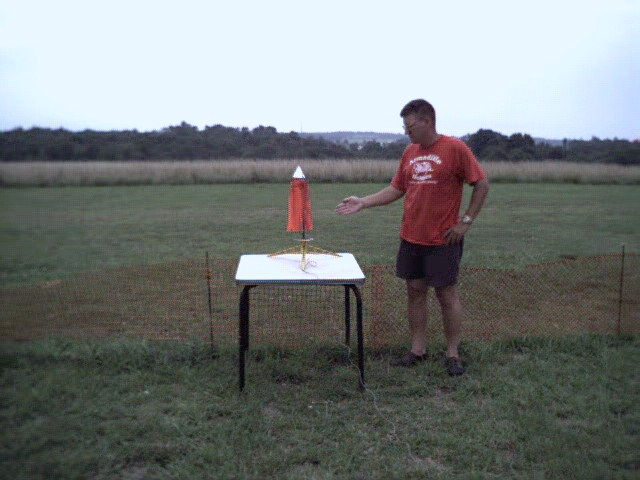
The Launch Vehicle (just like you would see at NASA)
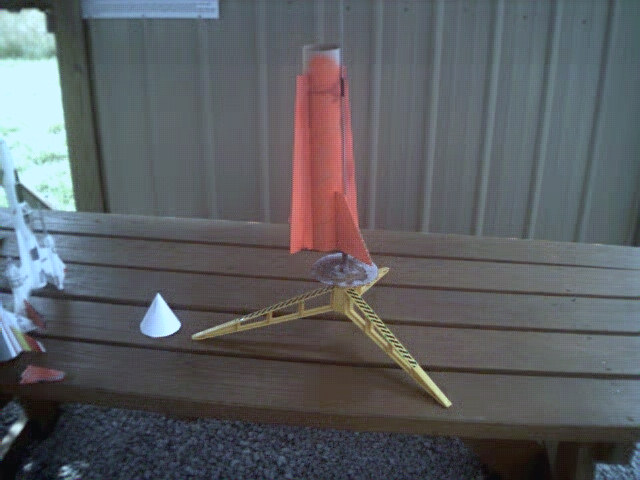
The Payload, complete with special re-entry coating
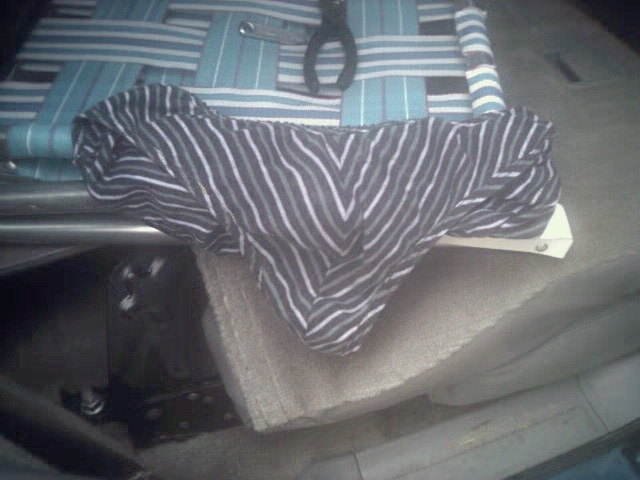
The Flight Ain’t she a beauty! Up, Up, And Away!
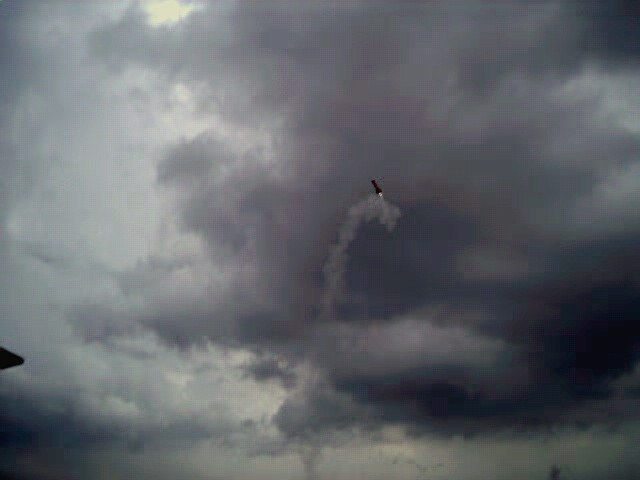
Another small step for man…a giant leap for Kentucky. And,
another pair of underwear into outer space!
This year, possibly in April, we will make the aviation community cringe again. We will launch the sacred Saturn V Rocket (almost complete):
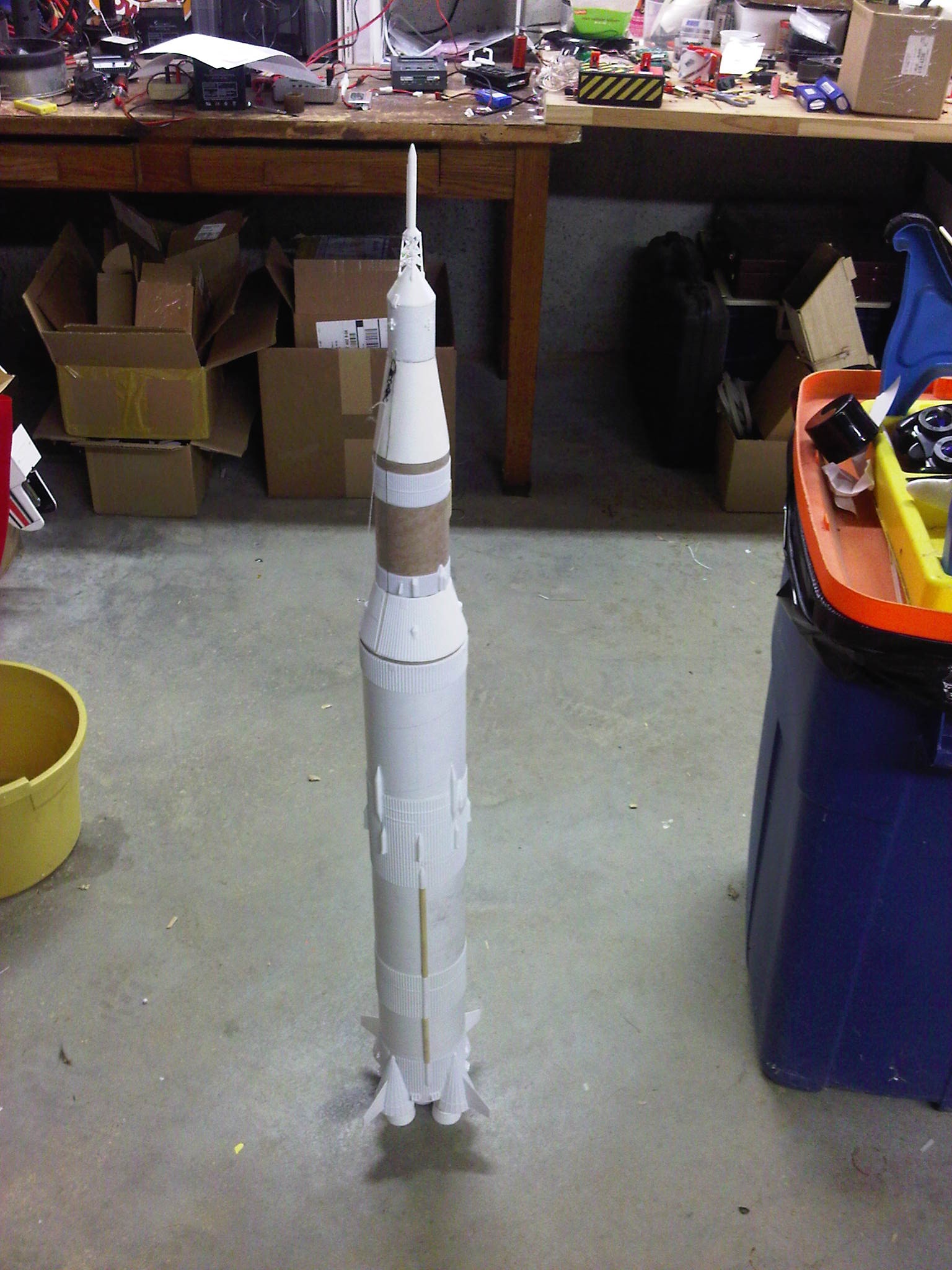
Launch it, we will, with the mighty launch controller:
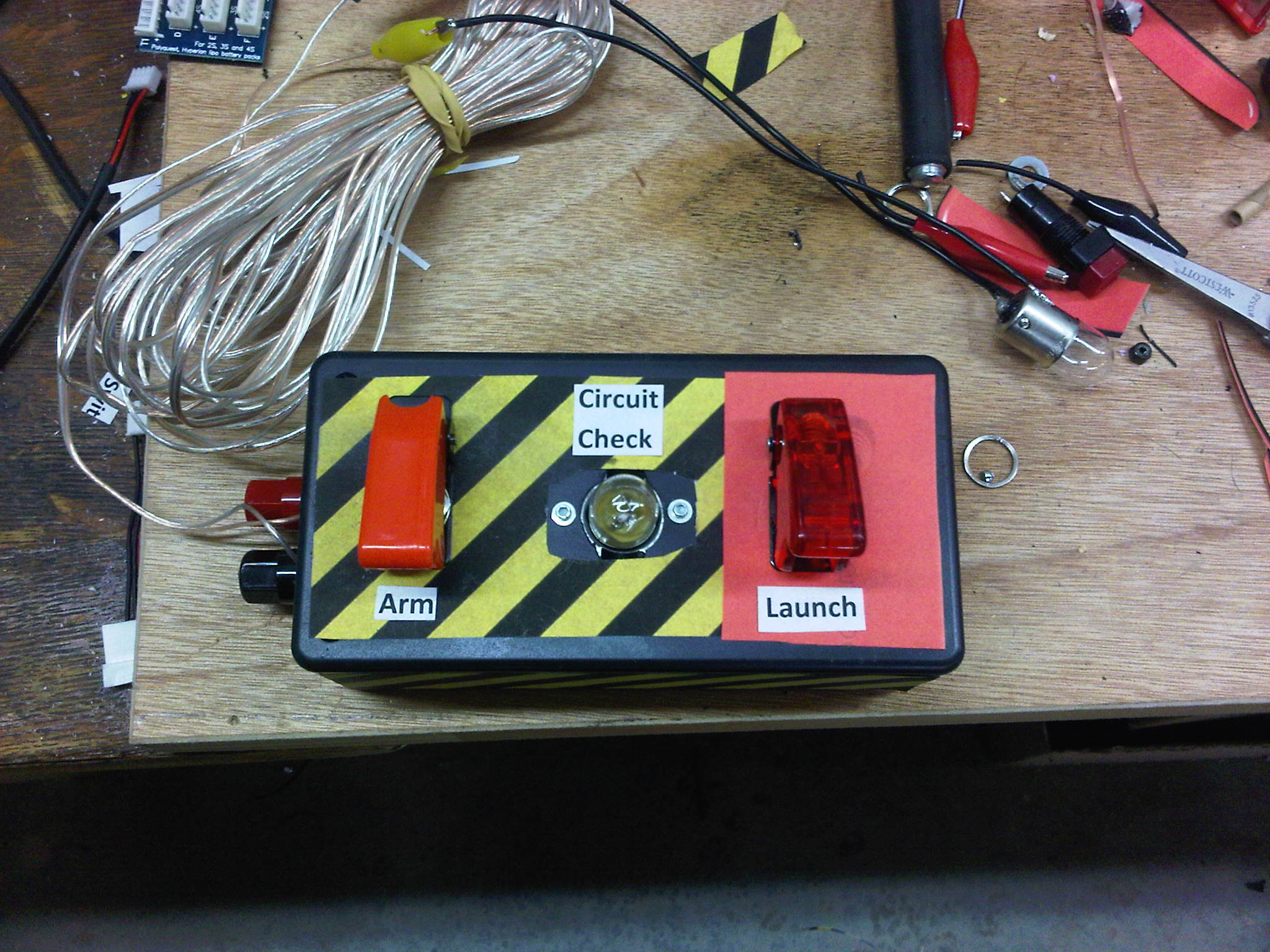
And of course, the finale will be the space underwear launch (candidate yet to be chosen). We have begun construction of the launch vehicle. Stay tuned.
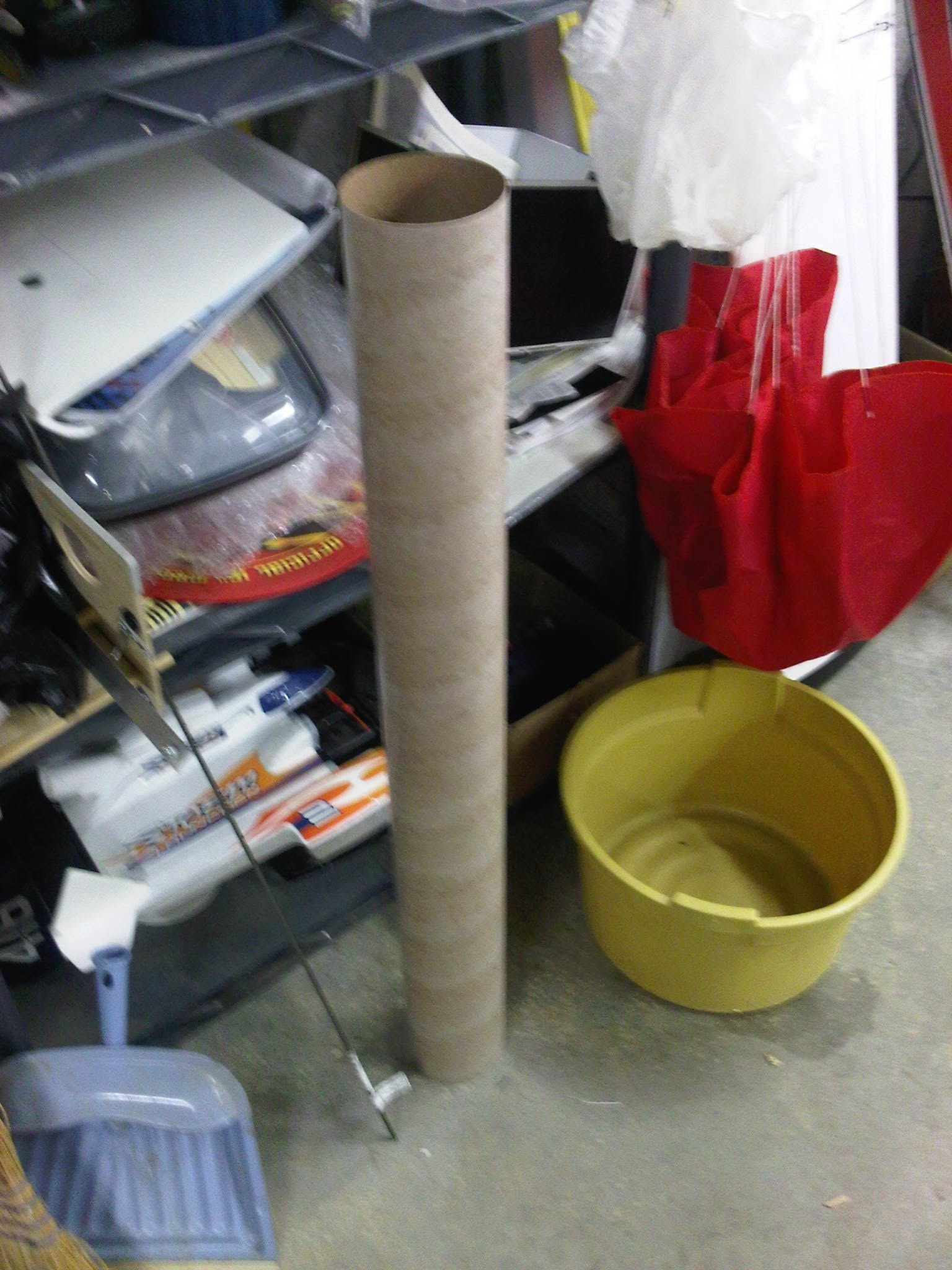
Cool guns come your way without even looking hard. There is this graveyard near hear with an old Civil War Columbiad sitting in the middle, presumably still guarding the inhabitants. So far it seems to be doing a good job, however, in case of hostilities, the gun would come up short.
Thomas Rodman was a Lieutenant in the U. S. Army before the Civil War, and had an idea that could possibly save the Columbiads being built at that time. The Columbiad was on it’s way to becoming the north’s big gun, but had a problem. At the larger sizes needed for seacoast defense, the Columbiads would crack when the casting would cool. At the time, the usual process for making a big cast iron gun would be to pour it in a mold, then turn the outside on a huge lathe (this part was just cosmetic) and drill the bore out. However when this giant hunk of cast iron cooled, it would crack.
Along came Rodman with an idea. He though that the cooling process was what was ruining the guns. He came up with a way to cast the gun with a pipe in the middle, just smaller than the bore would be. After it was poured, he would run water through the pipe to cool the gun from the inside out, instead of the usual outside in. They would heap hot coals on the outside for a while as it cooled to make it cool outwards.
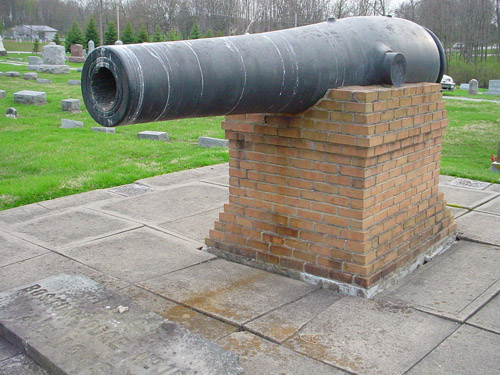
This worked great. The Army didn’t want to foot the bill the experimental part, so Rodman patented the idea and sold it to a private company to get things started. He was a huge success, so much so that all big cast iron guns came to be made that way, and the Columbiads even came to be known as Rodmans.
Later, after the war was over, and the benefits of rifling became painfully obvious even to the U.S.Army, a cheap way to keep these guns in action was sought. Some enterprising soul came up with an idea of drilling out the bores and inserting a rifled wrought iron liner to a smaller size. It was finally tested at Sandy Hook proving grounds and failed miserably. The gun came apart. A new attempt at inserting the liner from the rear was tried and also failed. The puzzling thing is that this happened in 1881, and there are lots of these converted guns around the country with dates on them several years after this. It’s a good thing no one saw fit to land on our shores, or we would be shooting liners at them.
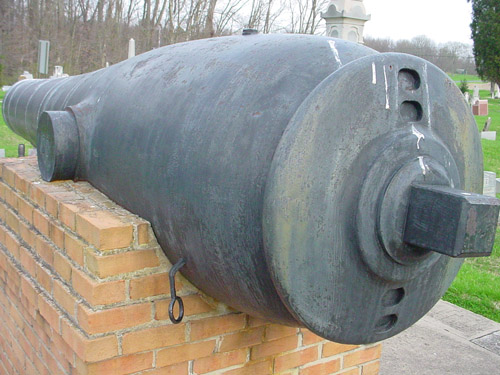
This gun, in the Stonelick Cemetery in Owensville, Ohio, is one of those converted guns. It started out in life as a 10 inch smoothbore Rodman, capable of sailing a hundred pound shell almost 5000 yards. It weighs over 15,000 pounds. It was converted in 1884 by inserting the liner from the rear, as it has the tell tale plug in the breech end. Now, as an 8 inch rifled gun, it could now shoot the theoretically same weight shell as when it was a 10 inch smoothbore, as the rifles shells could be longer. It was laid to rest in 1913, and they must have used a hell of a truck. Hydraulic cranes were still relatively new then, and they might even have used a steam crane to place it.
Well, the story does have a happy ending. The Army finally realized it couldn’t protect the seacoast of the United States on the cheap, and finally got around to producing newly designed and made guns to do the job.
greg
With the snow 5 inches deep outside, with another five on the way, of course I started thinking about Vietnam again. It’s 20 degrees here, but could get from 60 to 130 degrees there. I worked nights during the war cooped up in a 5 ton truck, but during the day I was free to roam around the country. So roam I did, and usually in the company of reporters.
They had vehicles, cameras, a nose for news and chased after the war. I was on foot, had a thirst for adventure, and they were glad to drag me along. As a rule they were pretty nice guys, and always had a beer to share. On the other hand, they had a propensity for taking you places that you later realized you didn’t really want to go to, especially when things got hot.
I caught this story in the Guardian about Don McCullin and some of the photographs he took during the war. A famous one caught my eye, Shell shocked US Marine, Hue Vietnam… since Hue was my base of operations I had to know more. The photo was famous for the haunted look of the marine, staring off past the camera, during a particularly rough battle during Tet of ’68. When I got there in 1970, all the holes were still in the buildings. It must have been a hell of a fight.
Other reporters were mentioned in the article, some famous, like John Steinbeck IV,the son of writer John Steinbeck. Another famous guy was Sean Flynn, the son of actor Errol Flynn. He’s not the Sean Flynn currently known in the movies, since he disappeared there in 1970 during the invasion of Cambodia by US troops.
Don McCullin was more like the reporters I knew, didn’t carry guns and were all business. Sean Flynn was a little more swashbuckling, like his dad and himself in some pirate movies. He carried guns, smoked a lot of dope, was fearless and stuck his neck out. The last time he stuck it out too far. You really couldn’t blame him. He was young, found adventure in an exotic locale, lived through danger and was free to do what he wanted. During the invasion of Cambodia, it was becoming clear he wanted to find out what it was like to be captured by the North Vietnamese. So he got his wish, along with reporter Dana Stone. They were captured in 1970 and never heard from again.
One friend of his, a Tim Page (who was the model for the reporter in Apocalypse Now) has probably done the best investigation of his disappearance, and figures he was killed by the Khymer Rouge a year after his capture. Reporter Tim King, who was a war reporter in Afghanistan, is putting together a documentary on Sean. Whatever happened, he’s dead now or he would have turned up somewhere. It makes you think about his judgment, but young guys in a war zone who smoke a lot of dope probably didn’t have the best judgment anyway. I know I didn’t. I did a few things I regret, but thankfully they didn’t kill me. I still think about roaming around with those reporters, and I’m glad they didn’t want to get captured. Thanks guys.
Update 3-29-10 Flynn’s remains discovered?
According to Fox News, freelance bonehunters may have found Sean Flynn’s remains. They have been turned over to the Joint POW/MIA Accounting Command for identification. Concerns have been expressed over the discovery, as the pair involved used excavating equipment and not forensic techniques to recover the remains. It seems there are freelance bonehunters looking for remains in Indochina, looking for a fee for their return.
greg
Did some time in the U.S. Army in 1970-72. I’ve noticed a few things since then that I like about our present army as opposed to our old army.
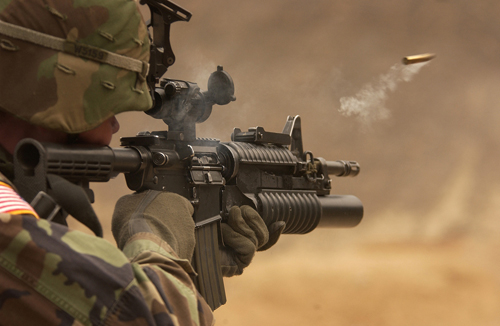
U.S. Air Force Photo By: Staff Sgt. Suzanne M. Day
We’ve got better weapons now.
Our M-16’s wouldn’t get out of their own way. Even if you cleaned them every night, you couldn’t see down the barrel in the morning. And they jammed a lot. And they had no optics. And they jammed a lot. (Of course there were a lot of used AK-47’s laying about.)
Body armor.
The only body armor a Vietnam era guy had was a flak jacket, that was useful for spent shrapnel, and that was about it. You could easily shoot a hole in your helmet with a .38. The guys in Afghanistan have some pretty nice ceramic armor, and there is even some interesting new body armor designs, like Dragon Skin.
Armored vehicles.
Not only didn’t we have armored vehicles, but most of them weren’t even enclosed with anything other than a soft top. The helicopters didn’t have armor, which had everybody sitting on their helmets.
Communication with the individual soldier.
Walkie talkies. Huge things, and only one for a whole lot of guys. Modern G.I.’s are plugged in, networked and God only knows what else. We got one call home per year and only with the help of a lot of Ham Radio guys. (Bless ‘em). You get video calls home now.
Modern Volunteer Army.
Nuff said.
greg
October 25th, 1415. The Hundred Years War had been dragging on forever. With the English and French kings both claiming authority over the other, the English King Henry V invades France. He kind of gets himself in a pickle, outnumbered 5 to 1, which leads to the best war speech ever, as remembered by Will Shakespeare.
A small excerpt from Wikipedia’s article of the speech:
“We few, we happy few, we band of brothers;
For he to-day that sheds his blood with me
Shall be my brother; be he ne’er so vile,
This day shall gentle his condition:
And gentlemen in England now a-bed
Shall think themselves accursed they were not here,
And hold their manhoods cheap whiles any speaks
That fought with us upon Saint Crispin’s day.”
However, in a New York Times article, historians seem to think that Henry wasn’t outnumbered at all, that the battle was an even fight and winning it wasn’t that big a deal. Well I think the speech was a big deal, and being involved in any battle and winning it is a good thing.
The most stirring speech I heard in Vietnam from General Abrams was to get our hair cut…. Just saying…
From the movie, Henry V (Patrick Branagh) in 1989
Then there is Sir Laurence Olivier’s version from 1944 (Made in Ireland with a few G.I.’s for extras)
greg
I think I’m losing my patience as I get older. I’d rather not hear anymore about Iraq, and especially Afghanistan.
We Americans are in love with the impossible. No matter how many countries have tried in the past, whatever it is, we can surely do it. We’re Americans.
Afghanistan, in terms of what we want to do, is impossible. We have set out to transform a people. We plan to take a 4th century country, and change its culture, it’s governmental structure, it’s very technology base. We want to do this over several years, with less than 100,000 teachers (soldiers, NGOs, etc). Impossible.
In WWII, the objective was to kill the enemy, up to a point that they surrendered, or to a point where there just wasn’t too may of them left alive. We bombed Dresden, Tokyo, and other major civilian structures into oblivion. Collateral damage was off the chart. Civilian casualties were also off the charts. No more enemy, job done.
We are after Osama Bin Hidin, and his organization. We think he and it is now in Pakistan. We don’t want Afghanistan to become a terrorist staging area. So take the money we save from the war and send up a new spy satellite. Keep a few more SR-71s flying. Buy a few more Global Hawks. But don’t send more troops to chase shadows. Recruit more people into the CIA.
Western Armies are very useful. But, they are best used against other like armies. in Iraq and Afghanistan, they are more like security guards. The biggest killer, the roadside bomb and the suicide bomber, continue with success.
Western Armies are typically very good at swift large scale destruction. The typical America 4 tank platoon routinely trains to defeat 14 or more opposing weapon systems entering their engagement area, in under a few minutes. Unfortunately, this kind of fight doesn’t happen in Afghanistan.
Coaching the Afghans to do their own fighting and ruling is like going through little league with your son. He cant grow up fast enough, no matter how hard you want him to. It’ll take years, and you’ll never be finished.
Just remembering a few things…
greg
I watched the Charlie Rose show last night. The show was a rebroadcast of selected interview spots with Robert F. McNamara. In one spot, Charlie Rose asked him why he had not weighed in on the current conflicts in Iraq and Afghanistan. McNamara stated he will not comment out of fear of hurting the war effort. He also fears helping the enemy effort. “The current Sec Def has access to information I may not have” he replied. “How can I comment?” (I paraphrase).
This is a journalist quizzing a former statesman. It made me consider my own feelings about reporters, now typically embedded with units of our armed forces. As if combat wasn’t difficult enough.
I harbor no particular fondness of McNamara, aside from finding his interviews interesting. I do not dislike him, but I can see why others might. He was a key figure managing a war that to this day is discussed with emotion as if it were yesterday. I had two cousins in that war, and both returned physically whole. I have a best friend who had an oldest brother. That brother did not return, and his name is on the wall. One only needs to compare lives lived, with lives absent, to feel the gravity of a war’s lasting damage.
I can understand why McNamara refuses to comment. Part of me gets it, and that may be from being in the service. Part of me likewise understands that in a free society, you need open debate about the course of great undertakings that use monstrous amounts of a nation’s resources, and the lives of its youth.
If a reporter was embedded in my squad or platoon, I’d have to ask him or her “ok, so are you an American?” and I’d ask “what is your objective in riding along with my platoon? To report it as it happens; to report a side of war unseen; to personally observe the unrelenting weight of combat and stress?” In other words, you have to choose a side. You are not the Red Cross.
“Have you considered your being here as having a distracting effect on my unit?”
* * *
I watched one hour of 360 where Anderson Cooper, a journalist, was commenting on a politician’s controversial decision, saying “is that leadership?” I had to wonder – what does he know about leadership? I did not ask for his opinion on leadership, and probably never will..
I do not believe journalists or investigative reporters are Priests, owing allegiance to some greater unquestionable good. How close do you have to get to war, to be satisfied it is indeed war? The stress, hardship, sadness and enduring scarring is not new, and it is not news. It seems to be the latest entertainment for a society with so many distractions that boredom of too many choices becomes a license to do and view the previously unthinkable. Reporters serve it up in buckets.
I really have no issue with investigative reporters seeing some worldly ill, and working hard to expose it, so that society can then correct it. But some things are hard enough without a reporter interpreting what just happened. You want to experience war, and be in the “experienced combat and lived” club? Then raise your hand. And even then, you might not get admitted.
br

